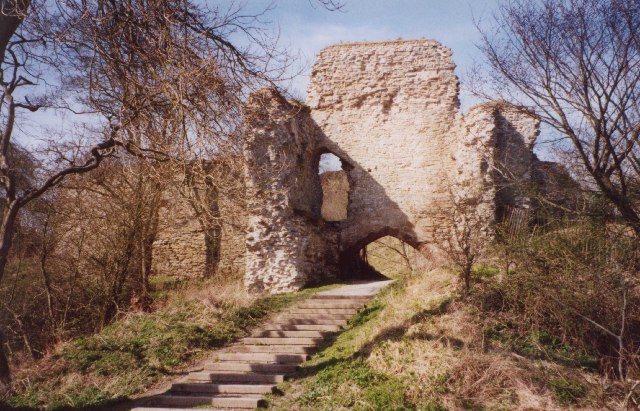|
Welham, Malton
Welham is a place in the civil parish of Malton, in North Yorkshire, England. It is situated south west of Malton. The Malton & Norton Golf Club is located north of the locality. Welham Hall is the main residence. History In the Domesday Book, Welham in the hundred of Scard, is mentioned as being held in 1066 by Edeva, wife of Topi, and in 1086 by Ranulph de Mortimer Ranulph I de Mortimer (''Ralf'', ''Ralph'', ''Raoul de Mortemer'') (born before –died in/after 1104) was a Marcher Lord from the Montgomery lands in the Welsh Marches (border lands between Wales and England). In England, he was Lord of Wigmore .... References {{authority control Populated places in North Yorkshire ... [...More Info...] [...Related Items...] OR: [Wikipedia] [Google] [Baidu] |
Malton, North Yorkshire
Malton is a market town, civil parishes in England, civil parish and Wards and electoral divisions of the United Kingdom, electoral ward in North Yorkshire, England. Historic counties of England, Historically part of the North Riding of Yorkshire, the town has a population measured for both the civil parish and the electoral ward at the United Kingdom Census 2011, 2011 Census as 4,888. The town is located to the north of the River Derwent, Yorkshire, River Derwent, which forms the historic boundary between the North Riding of Yorkshire, North and East Riding of Yorkshire, East Ridings of Yorkshire. Until 2023 the town was part of the Ryedale district and was the location of the headquarters of the district council. Facing Malton on the other side of the Derwent is Norton-on-Derwent, Norton. The Karro Food Group (formerly known as Malton Bacon Factory), Malton bus station and Malton railway station are located in Norton-on-Derwent. Malton is the local area's commercial and re ... [...More Info...] [...Related Items...] OR: [Wikipedia] [Google] [Baidu] |
North Yorkshire
North Yorkshire is a Ceremonial counties of England, ceremonial county in Northern England.The Unitary authorities of England, unitary authority areas of City of York, York and North Yorkshire (district), North Yorkshire are in Yorkshire and the Humber, and Borough of Middlesbrough, Middlesbrough, Redcar and Cleveland, and Stockton-on-Tees Borough Council, Stockton-on-Tees are in North East England. It borders County Durham to the north, the North Sea to the east, the East Riding of Yorkshire to the south-east, South Yorkshire to the south, West Yorkshire to the south-west, and Cumbria and Lancashire to the west. The county is the largest in England by land area, at , and had a population of 1,158,816 in 2021. The largest settlements are Middlesbrough (148,215) in the north-east and the city of York (141,685) in the south. Middlesbrough is part of the Teesside built-up area, which extends into County Durham and had a total population of 376,663 in 2011. The remainder of the cou ... [...More Info...] [...Related Items...] OR: [Wikipedia] [Google] [Baidu] |
Domesday Book
Domesday Book ( ; the Middle English spelling of "Doomsday Book") is a manuscript record of the Great Survey of much of England and parts of Wales completed in 1086 at the behest of William the Conqueror. The manuscript was originally known by the Latin name , meaning "Book of Winchester, Hampshire, Winchester", where it was originally kept in the royal treasury. The ''Anglo-Saxon Chronicle'' states that in 1085 the king sent his agents to survey every shire in England, to list his holdings and dues owed to him. Written in Medieval Latin, it was Scribal abbreviation, highly abbreviated and included some vernacular native terms without Latin equivalents. The survey's main purpose was to record the annual value of every piece of landed property to its lord, and the resources in land, labour force, and livestock from which the value derived. The name "Domesday Book" came into use in the 12th century. Richard FitzNeal wrote in the ( 1179) that the book was so called because its de ... [...More Info...] [...Related Items...] OR: [Wikipedia] [Google] [Baidu] |
Ranulph De Mortimer
Ranulph I de Mortimer (''Ralf'', ''Ralph'', ''Raoul de Mortemer'') (born before –died in/after 1104) was a Marcher Lord from the Montgomery lands in the Welsh Marches (border lands between Wales and England). In England, he was Lord of Wigmore in Herefordshire. In Normandy, he was the Seigneur of St. Victor-en-Caux. Ranulph was the founder of the English House of Mortimer of Wigmore. He acquired Wigmore Castle after William Fitz Osbern's son Roger de Breteuil joined the Revolt of the Earls of 1075. His lands and holdings in Herefordshire and Shropshire were granted to him by William the Conqueror before 1086. Background Allegiance to England After William the Conqueror's death, the Kingdom of England and the Duchy of Normandy were divided. Ranulph of Mortimer joined the ranks of the Rebellion of 1088 against the new King of England, William Rufus. Together with Norman, English and Welsh Marcher Lords, they invaded and conquered the lands of Hereford, Gloucester and Worcest ... [...More Info...] [...Related Items...] OR: [Wikipedia] [Google] [Baidu] |


